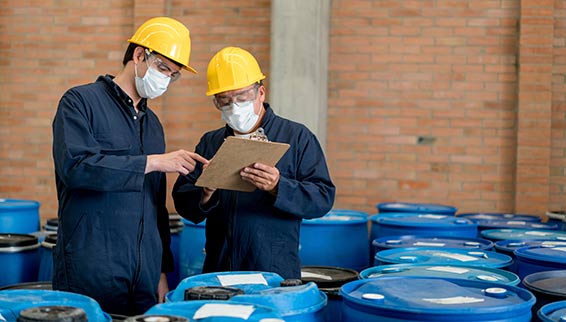Read the labels
Safety at work starts from knowing and understanding the labelling and safe use instructions of hazardous chemicals. By law, chemical suppliers have to classify their substances and mixtures. Learn the labels and stay safe!

Hazardous substances and mixtures have to be classified and chemicals that are placed on the market have to be properly labelled and packaged.
Labels can help you identify which chemicals are hazardous and how they can harm you. They also tell you how to store and handle hazardous substances safely.
Labels on products containing hazardous chemicals show the physical, health and environmental hazards of the product. They also tell you the precautions that should be taken to handle the products safely. The same labelling applies throughout the world so no matter where you work, learn the labels and stay safe.
Click here to see an infographic explaining the labels
Check the classification of chemicals
Chemical suppliers are responsible for classifying the substances and mixtures they supply. This is called self-classification.
Sometimes the classification is agreed by independent experts at European level. This is called harmonised classification. Many of the most hazardous substances that affect workers’ health have a harmonised classification.
This means that manufacturers across Europe are legally obliged to classify and label them in the same way. So, even if your supplier changes, harmonisation ensures that the classification and labelling of the substance will be the same. This will make it easier for you to know what precautionary measures you need to take when using the substance.
There are thousands of substances with a harmonised classification and the list is growing. One example is formaldehyde. Its harmonised classification creates an EU wide system of managing its risks. This is good news for workers and professionals in many industrial sectors, especially in the healthcare, construction, automotive and textile industries, where exposure can be high.
Read more
- Globally Harmonized System of Classification and Labelling of Chemicals - United Nations Economic Commission for Europe
- Classification, Labelling and Packaging of substances and mixtures - European Agency for Safety and Health at Work
- Chemicals at work – Guidance to help employers and workers manage the transition to the new classification, labelling and packaging system - European Commission [PDF] [EN]
Read Also
-
 general
generalUnderstand the labels
Warning symbols and specific colours on the labels of products provide information about the damage a particular substance or mixture can cause to your health or to the environment.
READ MORE -
 general
generalSafety precautions and exposure
Safety data sheets and exposure scenarios help you to handle chemicals safely and protect yourself. Suppliers of hazardous chemicals used in the workplace need to provide this safety information and you can get it from your employer.
READ MORE
